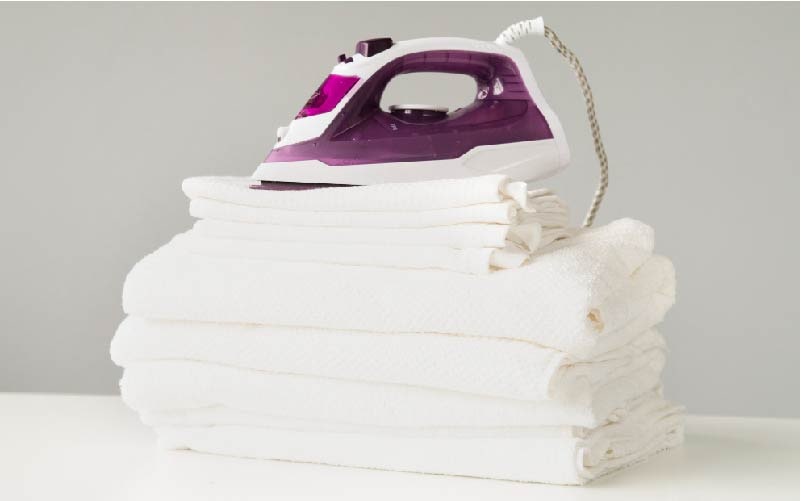No matter how interesting it looks, ironing is one of the chores that we all hate. It takes a long time to remove all the wrinkles or creases and different types of fabrics require particularly other methods and temperatures while ironing.
It is also one of those things we do without thinking much about it, but if you don’t do it the right way, it could be costing you time and money.
You may have been ironing for ages, but there are still plenty of things you may need to learn or keep in mind to enhance your ironing. Even if you’re a beginner at ironing, just looking to improve your skill, or want to iron hassle-free, avoiding the most frequent ironing blunders will ensure that your garments turn out flawlessly. That’s why we are here – to help you fix your mistakes.
Avoid the common errors done while ironing mentioned below:
1. Ironing Too-Dry Clothes
When clothes are completely dry or overdried in the dryer, they are tough to iron and challenging to bring back to their shape, even with ironing. But ironing will be considerably easier if you remove washed clothes from the dryer while they are still slightly damp. If you line-dry your clothes outside, bring them in before they are completely dry – do not crisp dry your clothes. Even freshly washed laundry that is moist or wet can be ironed. It works incredibly well with dress shirts and other thin-fabric clothing. After ironing, hang up the clothing to prevent wrinkling while it dries completely.
2. Not Using Ironing Board
Who wouldn’t like to feel and look better wearing wrinkle-free, well-ironed outfits? The proper way to iron clothing can be more complicated than you might imagine. In addition to the different fabric types and temperature ranges, there are also challenging features, including pleats, seams, collars and tucks. Sometimes, even smoothing out creases might cause someone a headache. The crease-free, flatness on clothes reflect your personality and image of cleanliness, and that comes with the use of a perfect tabletop for ironing.
3. Not Using Spray
Before ironing, when you spray water on stiff fabrics, the heat from the iron is spread uniformly throughout the fabric rather than being concentrated in one spot. It keeps the fabric from shriveling or getting damaged. If your iron doesn’t have a built-in sprayer to dampen clothes, use a plastic spray bottle and spray before beginning to iron. When you don’t use a sprayer, ironing is significantly harder and, for some fabrics, impossible.
4. Keeping Away Tap Water
Irons are more tolerant of tap water these days than older models; hence, you can use tap water in your iron. However, if your area’s water is extremely hard, the minerals therein may cause issues with your iron. Read the iron’s instructions, and if you doubt, iron with distilled water only. You can mix distilled water with tap water 50/50.
5. Putting Off Your Delicates for Last
Since irons take longer to cool than they heat, begin with materials that require the lowest temperature. If you have a huge pile of ironing, start with the lightest fabrics and work your way up to the heavier ones—first iron your delicate or synthetics like silk or polyester. After that, raise the temperature to medium for wool and, finally, high for cotton and linens. Do the opposite and you risk the fabric melting.
6. Not Shaking and Straightening Clothes
Shaking up clothes or linens helps them dry faster and prevents wrinkles. When clothes are taken out of the dryer or even the washer, we typically wait to dry them completely before ironing. Instead, take some time to shake out your clothes, and reshape and straighten the seams and pleats of your garment. It won’t completely replace ironing, but it will help avoid wrinkles that could be hard to smooth out, ultimately reducing your ironing time.
7. Not Cleaning Iron & Storing It with Water
The melted fibers and starch that stick on your iron can snag and stain other fabrics. Therefore, it is necessary to clean the soleplate of the iron. Use baking soda paste to clean it when it’s cold, or use iron cleaning paste when it’s warm.
Another point to note is that, before putting the iron away, always empty the water tank, especially if you’re storing it on the soleplate. As a result, extra water is prevented from staining the soleplate, leaking through and damaging the internal components.
Lastly, regardless of how much we hate it, we must perform this chore daily. If you don’t have time or want to avoid any risks while ironing your premium garments, you can let Phoenix Ironing Service do the best job. We provide our clients with effective pressing services and other trustworthy laundry services. Our expertise is best known for our premium quality services, including pickup and delivery in Navi-Mumbai.









